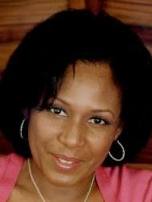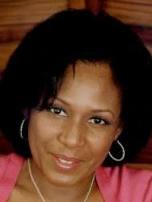Policy Shift Needed to Expand National Access to Dental Care
This post is by Sheree Crute, an Independent Journalist in Brooklyn, NY, and Chairperson of the National Advisory Committee for the Center for Health, Media & Policy.
Smiling and confident, Samantha Brown is proudly explaining her commitment to her new career to an audience of dentists and health advocates visiting Bethel, AK. Like so many young Alaska Natives, Brown, who is training to become a Dental Health Aide Therapist (DHAT), has seen the impact that poverty and poor access to care has had on the oral health of the children from her community.
“I am from Kotzebue, a town of 3500 people about 30 miles above the Arctic Circle,” says Brown, whose family is Inupiaq “Over the years, I’ve seen a lot of little children needing their four front teeth extracted or needing complete dental surgery. I hope to change that.”
Dental Health Aide Therapists spend two years being trained by dentists to diagnose dental problems, provide protective services to children, clean teeth, fill cavities, perform simple extractions and initiate community health programs. After accruing the 2000 hours of practice necessary for certification, they work under a dentist’s supervision.
DHATs are mid-level health care providers who can offer lower cost, often desperately needed care to medically underserved populations.
Kotzebue is one of 200 rural villages along Alaska’s Yukon-Kuskokwim Delta that are home to more than 85,000 Alaska Natives. The Delta, a broad stretch of tundra laced with rivers, lakes and one of the world’s largest populations of waterfowl, is an unlikely place for a revolution in oral health care, but that’s exactly what’s happening here.
For many years, the Alaska Indian/Alaska Native (AI/AN) population endured the highest rate of dental caries in the country, five times the national average in children 2 to 4 years of age, twice the national rate for children ages 6-14. The inability to access dental care (there’s one dentist for every 2,800 individuals in the Indian Health Service and Tribal Clinics) is a large part of the problem in an area where temperatures can drop to 12 below zero and winter travel may require a plane or boat.
“I can recall young ladies graduating high school with full sets of dentures,” says Valerie Davidson, senior director for Legal & Intergovernmental Affairs for the Alaska Native Tribal Health Consortium (ANTHC). A member of the Yupik tribe, Davidson grew up in Bethel.
Modeling the DHAT program what Davidson describes as “a long tradition of community health aides who traveled by boat to carry medicines to children,” the ANTHC sent their first class of DHAT students off to train in New Zealand—one of 54 countries with DHATS–nearly ten years ago (they now train in Washington State).





